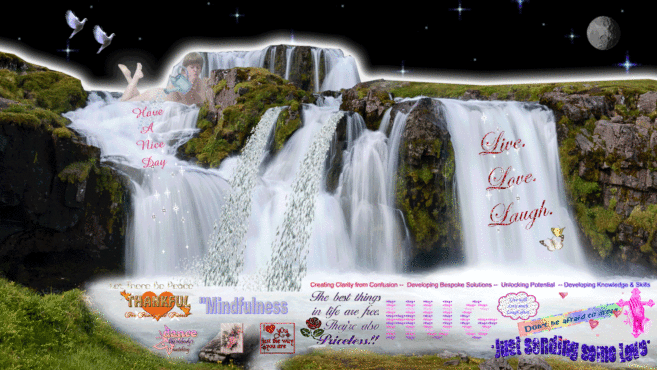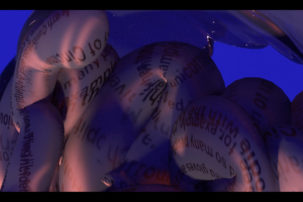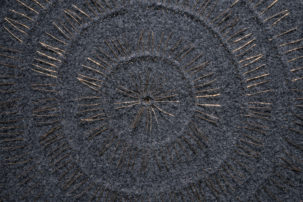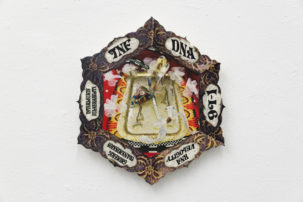In 1988 the debut runway presentation from Belgian fashion designer Martin Margiela introduced his label’s now-signature tabi boots: heeled leather shoes with a bifurcated toe. In the intervening 31 years, the tabi boot has circulated as a cult object, its currency evergreen among a demographic characterized in shorthand in Eric N. Mack’s exhibition “Dye Lens” as “skinny women.” The reference appears in a handwritten note affixed to The Endless Seed of Mystery (2018): a green moving blanket stuck with newspaper and painted with bands of pink and yellow.
Fashion is a frequent referent for Mack, but he speaks of his textile compositions, such as those in “Dye Lens”—collaged and quilted fabrics, sometimes painted, hung up on walls and from ceilings—in the language of painting. The conceit is both baggy and romantic: in the second century of the readymade, there’s a lot of room to give any object the name of another.
Suspended in the centre of the gallery is Paramount (2015), an architectural patchwork of plain and patterned cloth: planes of tie-dye, graphic prints and diaphanous greys and purples. A group of soft and heterogeneous panels spills onto the gallery floor. Elsewhere an as-yet-untitled assemblage (2019) stages a miscellany of objects—lumber, cardboard, silk scarves and a pair of Abercrombie & Fitch pants among them—on a length of fabric, all of which is blanketed with cranberry-coloured dye.
Though Mack’s engagement with painting—as a mode and as a discourse— is most explicit in its experimentation with form and abstraction, “Dye Lens” made me think instead of a genre defined by its subject: history painting. More than any other product, textile seems to carry with it the history of the body, like a material record of affect, service and desire. I think of Mike Kelley’s tapestry of disused stuffed toys and blankets sewn together, More Love Hours Than Can Ever Be Repaid (1987), both for its pastiche of Abstract Expressionist composition in soft and worn objects and for its title’s reference to the way these objects might bear the histories of intimacy and power. Mack’s soft surfaces inspire a similar kind of object empathy. It feels possible to read the excerpted items of cloth and clothing as metonyms for their users, and to in turn experience each of Mack’s installations as messy, associative sites for material histories, style and meaning.

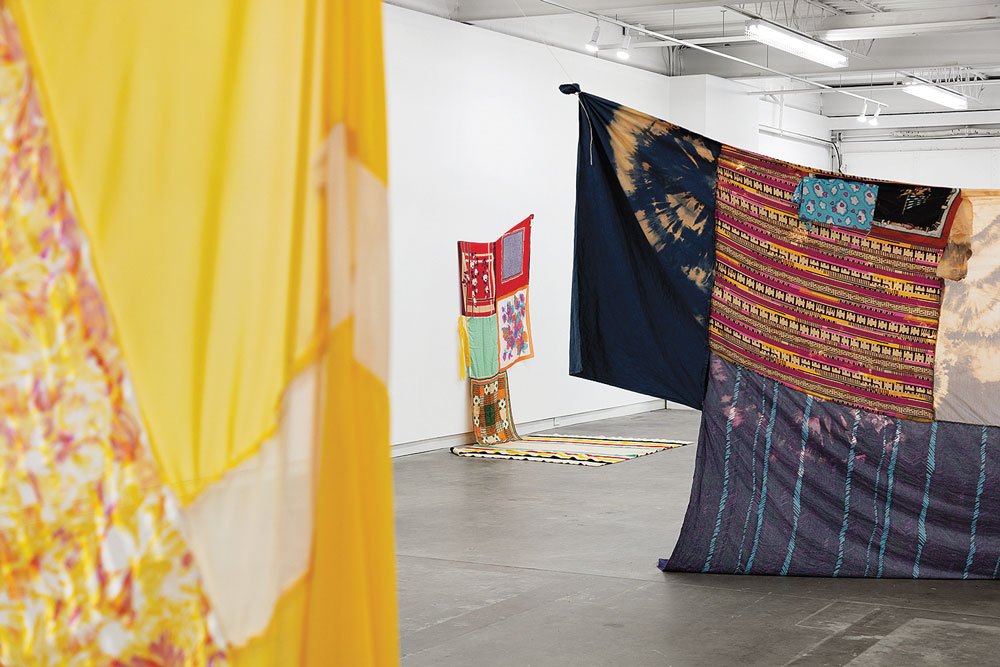 Eric N. Mack, “Dye Lens,” (installation view, detail), 2019. Courtesy Morán Morán Gallery, Los Angeles/Scrap Metal Gallery/
Art en Valise. Photo: Laura Findlay.
Eric N. Mack, “Dye Lens,” (installation view, detail), 2019. Courtesy Morán Morán Gallery, Los Angeles/Scrap Metal Gallery/
Art en Valise. Photo: Laura Findlay.
